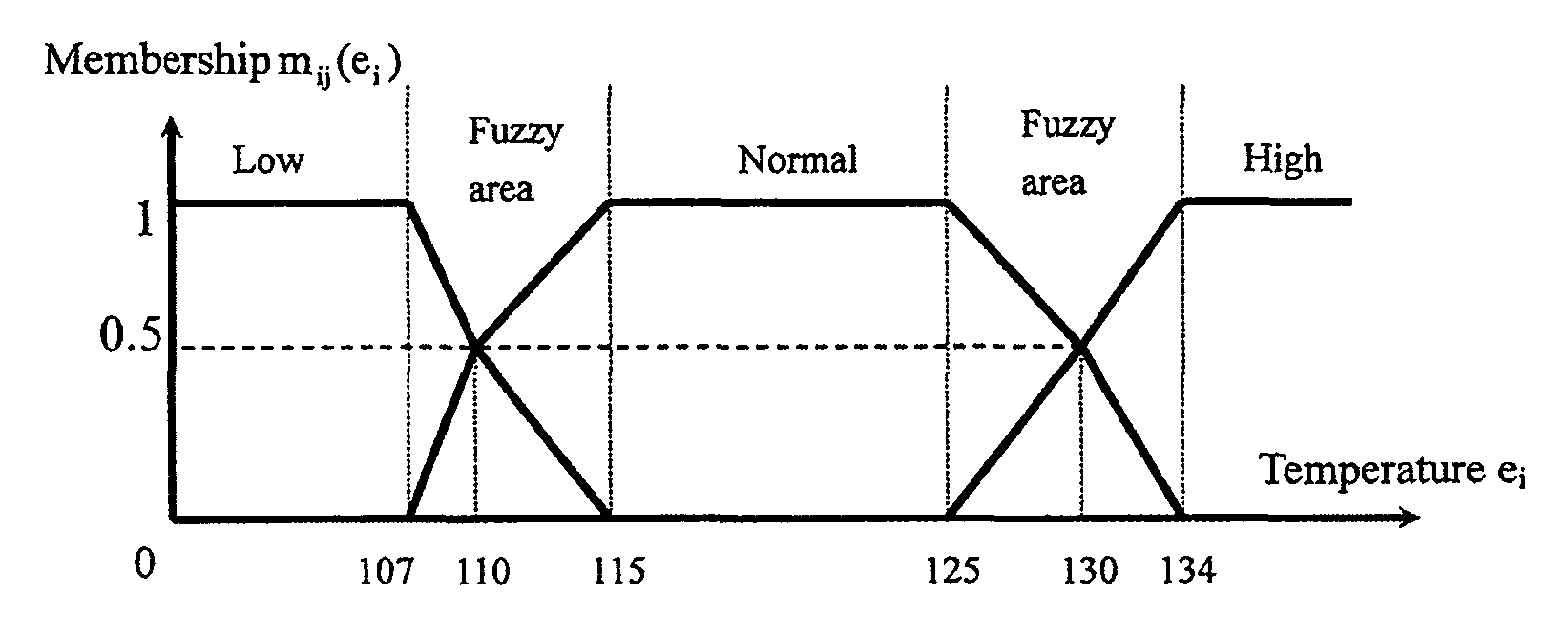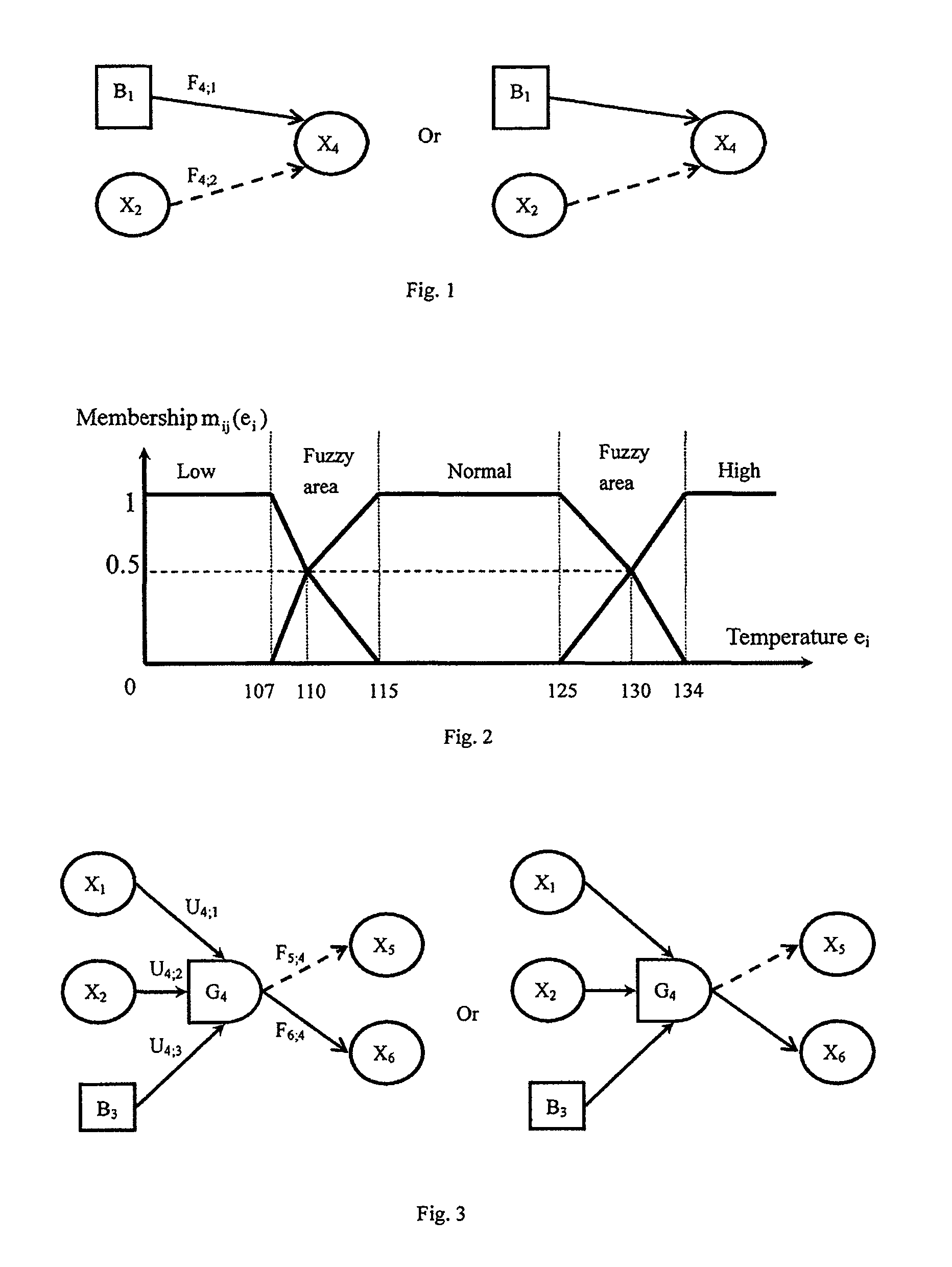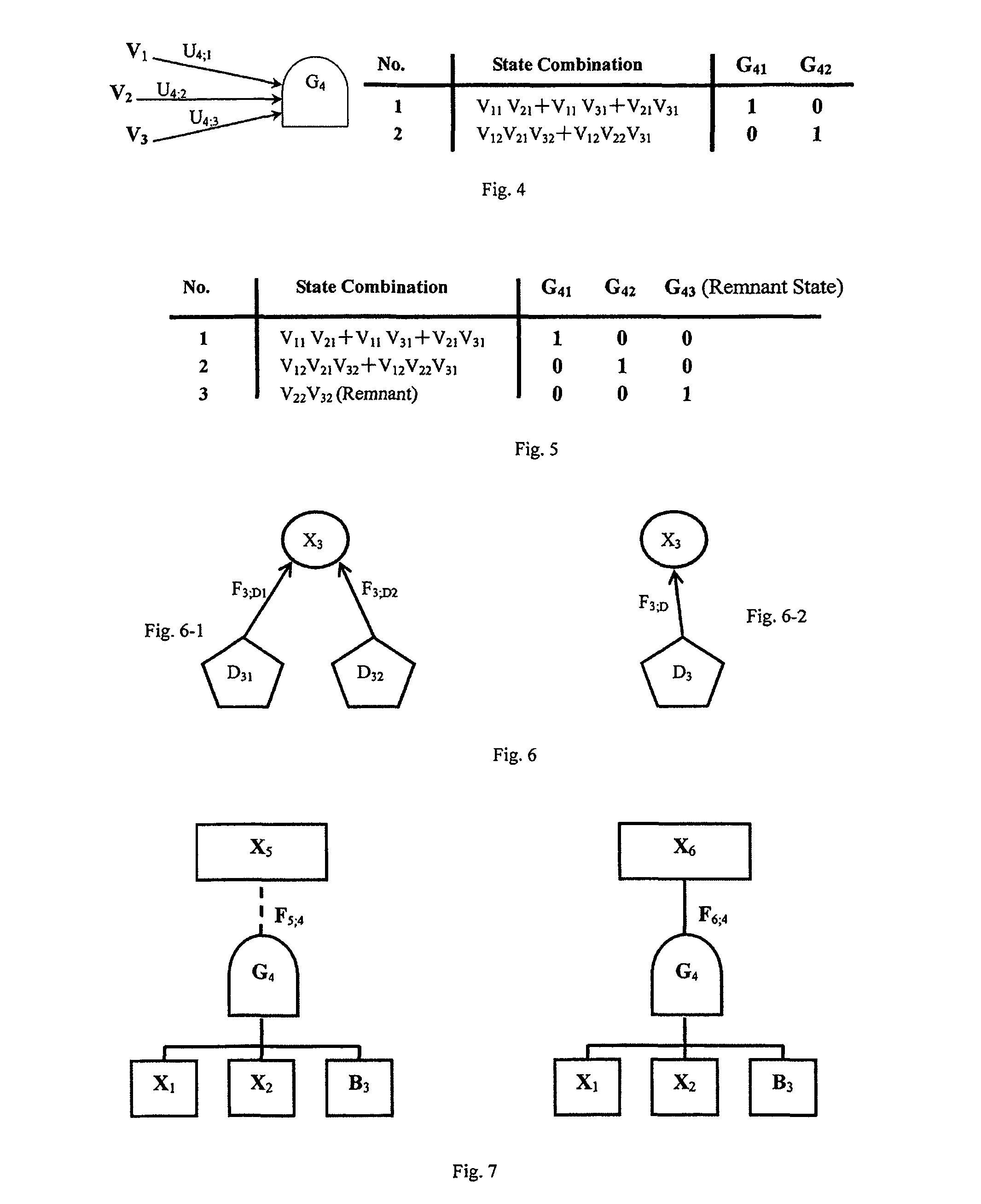Method for constructing an intelligent system processing uncertain causal relationship information
a causal relationship and intelligent system technology, applied in the field of intelligent system processing information, can solve the problem of low pressure in the steam pipe, and achieve the effect of improving the reliability and reliability of the system
- Summary
- Abstract
- Description
- Claims
- Application Information
AI Technical Summary
Benefits of technology
Problems solved by technology
Method used
Image
Examples
example 1
[0245]FIGS. 1 and 2 are idiographic examples about the method mentioned in §1, which is explained below.
[0246]§1.1. The consequence variable Xn can be drawn as which indicates the consequence variable indexed by n (in this example, n=2,4), e.g. the temperature of a stove. Xn is a brief notation of the consequence variable (consequence / effect event variable). It can have either discrete or continuous state value. For example, the stove temperature is abnormally high, normal, abnormally low, or the stove temperature is 1800 C°, 2000 C°, etc. Xn may have more than one input or cause variable (in this example, the input or cause variables of X4 are B1 and X2) and more than one output variable (i.e. the direct downstream consequence variables). The continuous variable can be fuzzily discretized (see §1.8 for details). The discrete or fuzzy discrete state of Xn is denoted as Xnk that is a specific event (e.g. the stove temperature is abnormally high), i.e. the consequence variable indexe...
example 2
[0302]Still as shown in FIG. 1, the meaning of the conditional functional variable is as follows.
[0303]§2.1. The only difference between the functional variable (F4;1 in this example) and the conditional functional variable (F4;2 in this example) is that the conditional functional variable is added an validation condition Cn,i (C4;2 in this example), while the others remain same. The meaning of Cn,i is: when Cn,i is valid, Fn,i is valid; otherwise, Fn,i is eliminated. The function of the conditional functional variable is that when the condition Cn;i is not valid, break the causality between the input variable and the output variable. In FIG. 1, it appears as that the directed arc representing the functional variable is eliminated. Vise versa, if the condition is valid, the conditional functional variable becomes the functional variable. In FIG. 1, the dashed directed arc becomes the solid directed arc.
[0304]The reason of introducing the conditional functional variable is because th...
example 3
[0305]FIGS. 3-5 are the examples about the logic gate, and are explained below.
[0306]§3.1. As shown in FIG. 3, a logic gate is drawn as i.e. the logic gate indexed by i (in this example, i=4), which is used to represent any state logical combination of input variables. Gi has at least one input (three inputs X1, X2 and B3 in this example) and at least one output (two outputs X5 and X6 in this example). The input variables are connected with the logic gate by the directed arc→that is different from the functional variable→and the conditional functional variable and are denoted as Ui;h (U4;1, U4;2 and U4;3 in this example), in which h is the input variable index (h=1,2,3 in this example). The elements of Ui;h are denoted as Uik;hj representing that the state j of the input variable h participates in the logic operation and results in the occurrence of the state k of the logic gate i. Uik;hj is either an inevitable event whose probability is always 1, or an impossible event whose pro...
PUM
 Login to View More
Login to View More Abstract
Description
Claims
Application Information
 Login to View More
Login to View More - R&D
- Intellectual Property
- Life Sciences
- Materials
- Tech Scout
- Unparalleled Data Quality
- Higher Quality Content
- 60% Fewer Hallucinations
Browse by: Latest US Patents, China's latest patents, Technical Efficacy Thesaurus, Application Domain, Technology Topic, Popular Technical Reports.
© 2025 PatSnap. All rights reserved.Legal|Privacy policy|Modern Slavery Act Transparency Statement|Sitemap|About US| Contact US: help@patsnap.com



